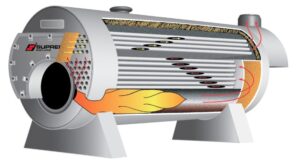Detailed Guide On Patients Over Paperwork
The best medical billing and coding services have taken actions in accordance with President Trump’s instructions in order to “cut the red tape,” helping America’s healthcare providers by decreasing the burden of unnecessary regulations and allowing them to focus on their primary focus, the patients. The Omnibus Burden Reduction (Conditions of Participation) Final Rule strengthens patient security by eliminating unnecessary, outdated, or heavy health regulations for hospitals as well as others who provide healthcare.
This rule furthers the CMS’s Patients over Paperwork program by reducing costs for providers by approximately 4.4 million hours of time previously employed in paperwork every year and the overall provider savings are estimated to be around eight billion over the next 10 years, allowing doctors more time with patients.
Medical Billing And Coding Services
CMS is determined to ensure that patients receive safe, high-quality treatment, and have time with their medical providers. This is why CMS carried out a thorough examination of regulations to find out the areas where modifications to outdated duplicate, unnecessary, or ineffective regulations could be implemented to improve the delivery of healthcare. CMS is currently finalizing modifications that will streamline and enhance regulations to put a greater emphasis on the safety of patients and enhance the quality of healthcare. CMS conducted this work from three different angles that included increasing patient safety, removing the burdensome regulations, and eliminating redundant regulations.
In the current regulations, every Medicare-certified hospital must establish and sustain ongoing Quality Assessment and Performance Improvement (QAPI) programs as well as infection control plans. In the final rules, they will simplify the regulations, allowing multiple hospitals in the same system to use a unified QAPI program. This makes it simpler for hospitals to adopt top practices and new innovations across hospitals, resulting in faster improvements in the quality of care. It also helps smaller and less populated hospitals, being able to access the expertise and resources of the large hospital chain.
Also, the final ruling seeks to eliminate the burdensome rules by reducing certain essential tasks. For instance, under the previous regulations, orders for X-rays had to be signed and written. In the new regulations, these orders can be sent in writing via telephone or electronically. In addition, by revising the deadlines for certain regulations, healthcare providers will be able to focus more on the direct care of patients. Particularly, CMS is reducing the frequency of program and policy evaluations that rural health clinics, as well as federally accredited health centers, must perform from yearly to once twice every 2 years.
What are the implications of the Patients Over Paperwork Initiative?
In October of 2017, CMS and the Trump administration launched Patients Over Paperwork, their initiative to ease the burden placed on Medicare as well as Medicaid medical providers. Through reducing administrative burdens CMS is seeking to ensure that healthcare is more efficient and focused on the needs of patients. This initiative is in response to complaints from the healthcare industry about excessive federal regulation.
The extent of the problem is evident when we consider the fact that CMS averages 58 rules that are published every year, including more than 11,000 pages of fresh regulation every year. A recent study published in the Annals of Internal Medicine reported that physicians who treat primary care patients spend nearly 27 percent of the time working on clinical services, and nearly half of the time is spent on administration. CMS is hoping that reducing paperwork will decrease the amount of time doctors fill out paperwork, so that they can have more time to attend to patients, thereby improving the quality of care.
CMS believes that the Omnibus Final Rule will allow CMS to reach around $800 million in savings every year through 2028, or around eight billion in the coming 10 years. In order to track savings made under Executive Order 13771, “Reducing Regulation and Controlling Regulatory Costs,” the savings figure is calculated in dollars in 2016 and discounted by 7 percent in comparison to the year 2016 to allow for a smooth comparison across all operations governed by this Executive Order. This alternative calculation effectively removes the impact of inflation that CMS estimates and results in a total of $647 million annually in savings for the duration that are outlined in this Executive Order.


















